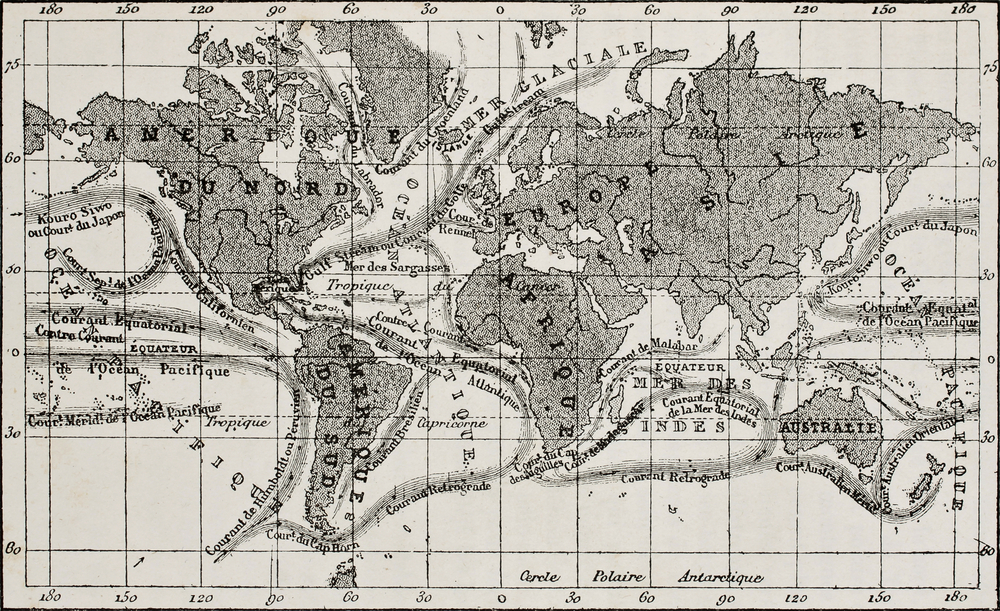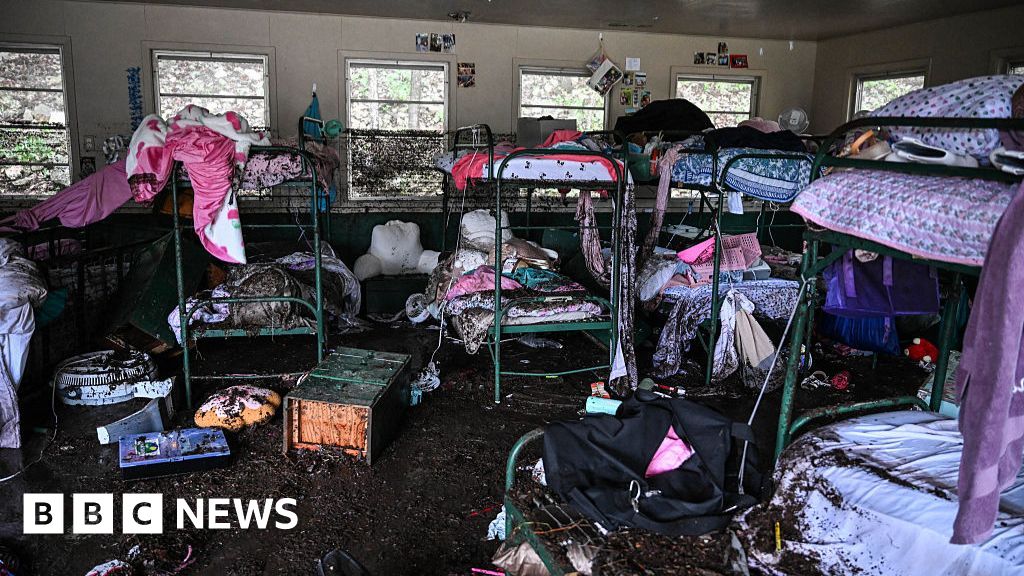Picture an invisible force shaping the weather you take for granted—keeping Europe cozy, rains falling where crops thrive, and coastlines stable. Now imagine that force grinding to a halt. Scientists are sounding alarms about the Gulf Stream, a vital ocean current teetering on the edge of collapse. This isn’t a distant threat; it could happen in our lifetime, with consequences that ripple across the globe. What’s driving this crisis, and how bad could it get?
What’s Happening to the Gulf Stream?
The Gulf Stream acts like a massive conveyor belt in the Atlantic Ocean, ferrying warm, salty water from the tropics to the North Atlantic, where it releases heat that keeps Western Europe milder than it would be otherwise. It’s part of a broader system called the Atlantic Meridional Overturning Circulation (AMOC), which drives global climate patterns. But here’s the kicker: this system has been weakening for over a century, and scientists warn it could shut down entirely. A 2023 study suggests this could happen as early as 2025 or as late as 2095, with 2050 as a central estimate if we don’t slash carbon emissions. The fallout? Think plummeting temperatures, chaotic weather, and ecosystems thrown into disarray.
Why Is the Gulf Stream Weakening?

Climate change is the main culprit. Rising greenhouse gas emissions are heating the planet and causing Greenland’s ice sheet to melt at an alarming rate. This floods the North Atlantic with freshwater, which dilutes the salty, dense water that powers the AMOC’s flow. Less salt means less sinking, and the whole system slows down. A recent study from the University of California, Riverside, nails this connection. “People have been asking why this cold spot exists; we found the most likely answer is a weakening AMOC,” says Wei Liu, a climate scientist who led the research. Their models show a “very robust correlation” between this slowdown and climate change, driven by over a century of temperature and salinity data.
The problem isn’t just ice melt. Human activities—such as burning fossil fuels and deforestation—continue to pump greenhouse gases into the atmosphere, amplifying the trend. If emissions don’t drop, the AMOC’s decline will only accelerate, pushing it closer to a tipping point where it could collapse entirely.
How Do We Know It’s at Risk?

Scientists have pieced together the decline of the Gulf Stream using a century of ocean data, focusing on a stubborn cold patch south of Greenland that has refused to warm, unlike the rest of the Atlantic. This anomaly, paired with dropping salinity levels, screams trouble. Liu and his team analyzed temperature and salinity records dating back to 1870, comparing them to nearly 100 climate models. Only models simulating a weakened AMOC matched the real-world data—cooler, fresher waters in the sub-polar region. Direct measurements of the AMOC only began in 2004, so these proxy data are crucial for identifying long-term trends.
The 2023 study, published in Nature Communications, used these patterns to map the AMOC’s trajectory toward a “saddle-node bifurcation”—a fancy term for a sudden, irreversible collapse. While uncertainties remain, the evidence is clear: the system is faltering, and we’re running out of time to act.
What Happens to the UK If It Collapses?
If the Gulf Stream were to shut down, the UK could become a significantly different place. Without the warm water it delivers, temperatures could plummet by up to 10°C, making Britain’s climate more like Scandinavia’s—bitterly cold and unforgiving. “In simple terms, [it would be] fundamentally less habitable than it is at the moment,” warns Tim Lenton, a professor of climate change at the University of Exeter. Expect harsher winters, with stronger westerly winds whipping up more frequent and intense storms. Flooding risks would increase, and vulnerable groups, such as the elderly and young, would face grave dangers from extreme cold and weather chaos.
These changes wouldn’t just make life uncomfortable—they could cost lives. Stronger storms and flooding could overwhelm infrastructure, while frigid winters would strain heating systems and healthcare. The UK’s mild climate, which many take for granted, hinges on the Gulf Stream’s warmth. Losing it would rewrite daily life.
Global Ripple Effects of a Collapse

The fallout wouldn’t stop at the UK’s shores. A collapsing AMOC would disrupt rainfall patterns critical for agriculture in India, South America, and West Africa, triggering droughts and famines that could affect billions. Rising sea levels would hammer North America’s eastern coast, flooding cities and displacing communities. The Amazon rainforest and Antarctic ice sheets would face even greater threats, accelerating global warming’s vicious cycle. “Many millions would be affected and suffer from drought, famine and flooding, in countries that are already struggling to deal with these issues,” says David Thornalley, a climate scientist at University College London.
The human toll could be staggering. Millions of climate refugees might flee uninhabitable regions, sparking geopolitical tensions and straining global resources. Stefan Rahmstorf, a climate scientist at Germany’s Potsdam Institute, calls a complete AMOC collapse “a massive, planetary-scale disaster.” From food shortages to economic upheaval, the consequences would touch every corner of the globe.
How Soon Could This Happen?
The timeline is unsettling. The 2023 study predicts the AMOC’s potential collapse between 2025 and 2095, with 2050 as the midpoint if emissions continue to rise. That’s within many of our lifetimes. But the exact timing is tricky—models vary, and data uncertainties add complexity. Some scientists argue that the study’s assumptions oversimplify the dynamics of the tipping point, while others say it serves as a wake-up call. Past AMOC collapses have occurred during ice ages, so a modern shutdown would be uncharted territory, making predictions more challenging.
What’s clear is the urgency. If global emissions drop significantly, we could delay or even avoid the tipping point. Current climate policies aim for this, but they’re not enough yet. Every year of delay in cutting emissions brings us closer to the edge.
Why the South Greenland Cold Spot Matters

That cold patch south of Greenland isn’t just a curiosity—it’s a red flag. While the Atlantic warms overall, this region stays chilly, a sign that less warm, salty water is reaching the North Atlantic. This anomaly messes with Europe’s weather, shifting the jet stream and altering rainfall patterns. It also disrupts marine ecosystems, as changes in temperature and salinity affect where fish and other species can survive. Liu’s study showed that only climate models with a weakening AMOC could explain this cold spot, debunking theories that pinned it on atmospheric factors like aerosol pollution.
This region’s sensitivity makes it a critical barometer for the AMOC’s health. By studying it, scientists can better predict how the system’s decline will reshape global climate patterns, from European storms to North American heatwaves.
Can We Prevent This Disaster?
Hope isn’t lost, but time is short. Slashing greenhouse gas emissions is the most significant lever we can pull to slow the decline of the AMOC. Transitioning to renewable energy, boosting energy efficiency, and protecting forests are all critical steps. If global policies align with ambitious climate goals—such as those outlined in the Paris Agreement—we could push the tipping point further out, giving us more time to adapt.
Individuals can help, too. Cutting energy use, supporting sustainable policies, and spreading awareness all add up. Governments and industries must lead the charge, but public pressure can drive change. The AMOC’s fate hinges on collective action, and every step toward lower emissions counts.
What’s Next for Research and Action?
Scientists are racing to refine their understanding of the AMOC’s tipping point. More precise models are needed to capture its non-linear behavior, as many current ones underestimate the risk. Direct ocean measurements, although limited, are expanding, and proxy data, such as temperature and salinity records, remain vital. “There is still large uncertainty where the Amoc tipping point is, but the new study adds to the evidence that it is much closer than we thought,” says Stefan Rahmstorf. Further research will help narrow down the timeline and impacts.
For now, action is non-negotiable. Support policies that curb emissions, stay informed about climate science, and advocate for global cooperation and collaboration. The Gulf Stream’s collapse isn’t inevitable, but avoiding it demands urgency and commitment. Let’s act before this conveyor belt stops for good.













Leave a Reply